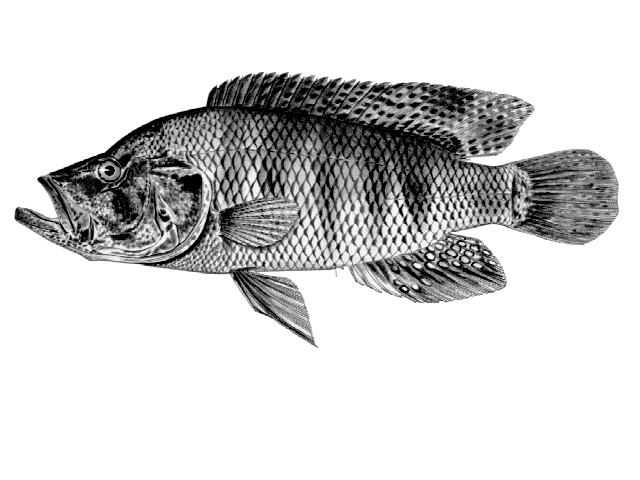| Cichlidae (Cichlids), subfamily: Pseudocrenilabrinae |
| 41 cm SL (male/unsexed); max.weight: 2,500.0 g; max. reported age: 9 years |
|
demersal; freshwater, |
| Africa: Cunene River system (Angola and Namibia), Okavango River, upper Zambezi, and Kafue Rivers (Angola, Namibia, Botswana, Zambia, Zimbabwe)(Ref. 5693), and Luapula-Moeru (Congo River system)(Ref. 361, 11970, 41590, 42135, 45616) in Democratic Republic of the Congo and Zambia. |
|
Description: moderately deep-bodied to deep-bodied; head large; snout long and protruding; mouth large; frontal profile concave; caudal fin slightly rounded to subtruncate (Ref. 52307).
Coloration: body yellowish-brown or reddish-brown, darker brown on front of head and on back; numerous reddish to brown dots, often arranged into horizontal rows, on head and anterior body; numerous dark brown to orange-brown maculae in unpaired fins, especially soft dorsal and anal fin, sometimes also in pelvic fins; males with several small, orange egg spots in anal fin; juveniles more silvery in color, but eventually develop dots on head; courting males with dark belly and dark pelvic fins (Ref. 52307). |
| Occurs in well-vegetated swamps and along the edges of rivers (Ref. 6465). Also occurs in fast-flowing reaches over sand and rocks (Ref. 6465, 52307). Feeds primarily on small fish (Ref. 6465, 52307), also on shrimps and insects (Ref. 6465). A female (Ref. 52307) mouthbrooder which breeds in spring (Ref. 6465). Aalso caught with drawnets (Ref. 6465). |
|
Least Concern (LC); Date assessed: 01 May 2009 Ref. (130435)
|
| harmless |
Source and more info: www.fishbase.org. For personal, classroom, and other internal use only. Not for publication.
